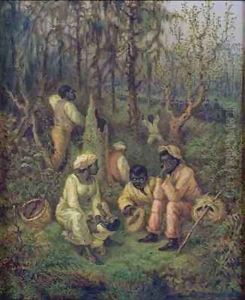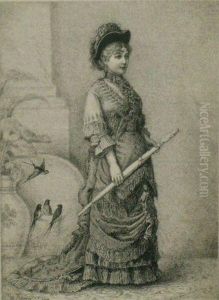David Cronin Paintings
David Cronin, sometimes known as David Edward Cronin or under his pseudonym Seth Eyland, was an American painter, illustrator, and journalist born on March 30, 1839, in Greenwich, New York. He is often remembered for his contributions as a Civil War correspondent as well as for his artistic works that include historical scenes, landscapes, and portraits.
Cronin's early years were marked by his interest in the arts, but his career path initially led him into the world of journalism. During the American Civil War, he served as a Union Army correspondent for the New York Illustrated News. His experiences during the war would later profoundly influence his art, as he sketched and documented scenes from the conflict.
Following the Civil War, Cronin focused more on his artistic career. He moved to New York City where he studied at the National Academy of Design. His works during this period started to reflect his interests in American history, especially his Civil War experiences. Cronin's paintings often depicted the valor and struggles of the soldiers, aiming to capture the emotional depth of the scenes he had witnessed.
In addition to his historical paintings, Cronin also produced portraits and landscapes that reflected the 19th-century American aesthetic. His style was rooted in the Romantic tradition, emphasizing the dramatic and picturesque qualities of his subjects. Cronin's landscapes, in particular, showcased his ability to capture the natural beauty of the American terrain.
Throughout his career, Cronin exhibited his works at various institutions, including the National Academy of Design and the Brooklyn Art Association. He was also an active member of the art community and engaged in the social issues of his time, which occasionally surfaced in his illustrations and writings.
David Cronin's legacy as an artist is intertwined with his role as a chronicler of American history. His paintings and sketches not only provide a visual record of a tumultuous time in the nation's past but also reflect the cultural and artistic sensibilities of his era. Cronin passed away on February 12, 1925, leaving behind a body of work that continues to be of interest to historians and art enthusiasts alike.

